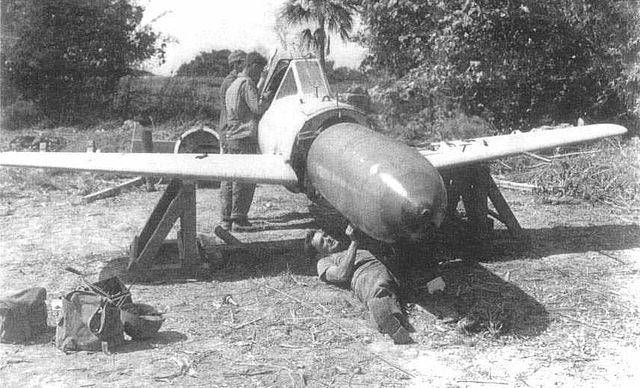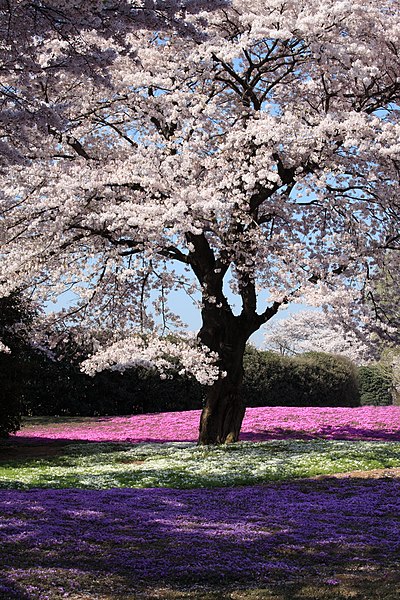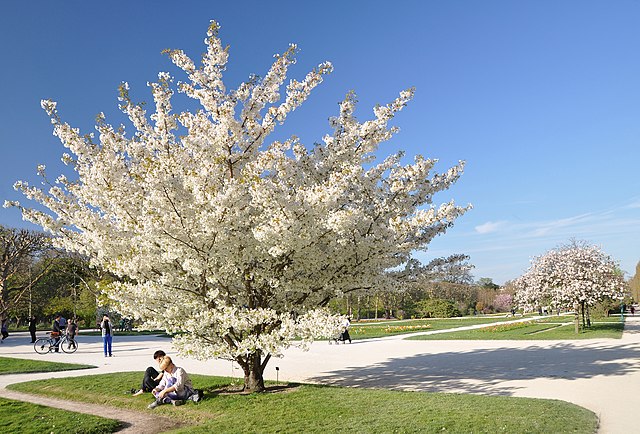The Yokosuka MXY-7 Ohka was a purpose-built, rocket-powered human-guided kamikaze attack-aircraft deployed by Japan against Allied ships in the Pacific Ocean theater towards the end of World War II. Although extremely fast, the Ohka had a very short range, so it had to be carried into action as a parasite aircraft by a much larger bomber, which was itself vulnerable to carrier-borne fighters. In action during the Battle of Okinawa in 1945, Ohkas succeeded in sinking or damaging some escort-vessels and transport ships, but never sank any major warships. The Japanese developed improved versions in an attempt to overcome the aircraft's shortcomings, but they came too late for deployment.
Yokosuka MXY-7 Ohka
US personnel disarming the warhead of an Ohka, Yontan Airfield, Okinawa, April 1945
Thermojet powered Model 22; note the jet intake on the side just forward of the tail.
Model 43 K-1 Kai rocket assist trainers; note the landing skid.
The cherry blossom, or sakura, is the flower of trees in Prunus subgenus Cerasus. "Sakura" usually refers to flowers of ornamental cherry trees, such as cultivars of Prunus serrulata, not trees grown for their fruit. Cherry blossoms have been described as having a vanilla-like smell, which is mainly attributed to coumarin.
Cherry blossom tree in Yachounomori Garden, Tatebayashi, Gunma, Japan
Prunus speciosa (Oshima cherry), a species of cherry tree that has given rise to many cultivars
Prunus serrulata 'Kanzan' or 'Sekiyama', one of the most popular cherry tree cultivars in Europe and North America, selected for the British Award of Garden Merit
Woodblock print of Mount Fuji and cherry blossom from Thirty-six Views of Mount Fuji by Hiroshige. 1858.








